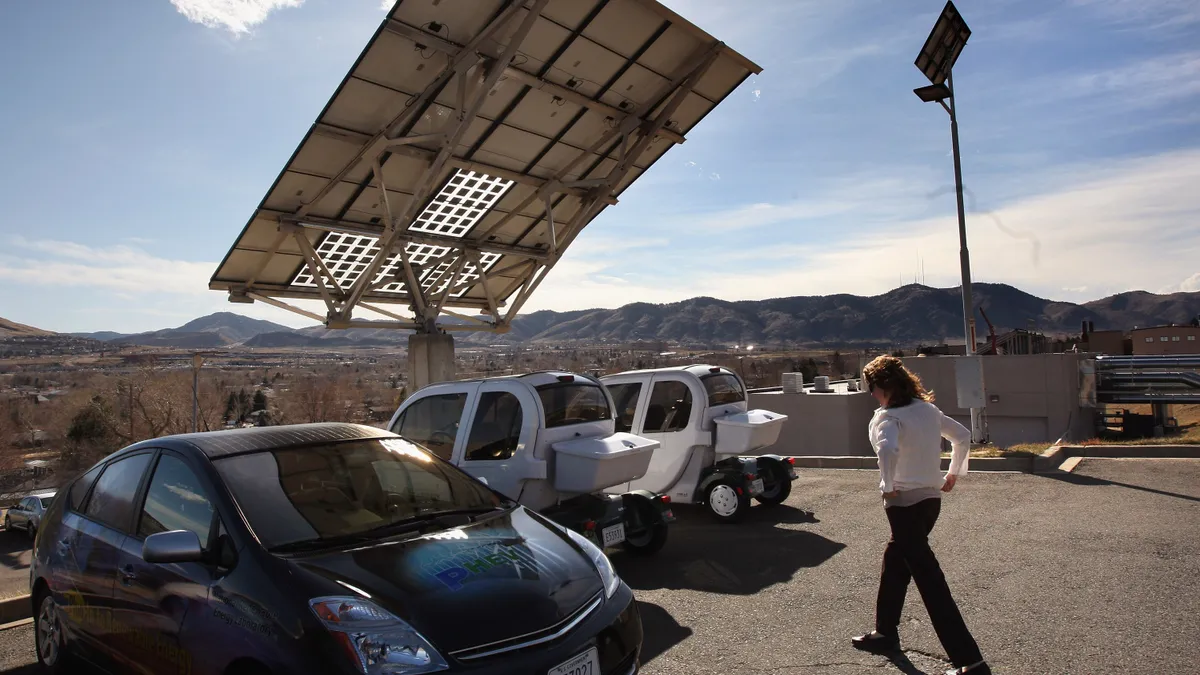Dive Brief:
- Colorado released in June final versions of its statewide energy codes, requiring local governments to meet minimum new energy-related infrastructure and building efficiency standards, according to documents released by the Colorado Energy Office.
- The energy codes will ensure new buildings are compatible with electric vehicle plugs and solar panels.
- Colorado is one of several states to update its building codes to comply with efficiency standards and accommodate energy infrastructure. Minnesota lawmakers also proposed changes to its commercial building codes, which Gov. Tim Walz signed into law in May.
Dive Insight:
The new statewide rules require most municipalities to meet two main codes, including the 2021 International Energy Conservation Code, which sets rules around well-built and well-insulated structures, and a new set of energy codes developed by the Colorado Energy Code Board.
As of July 1, all municipalities with existing building codes need to meet or exceed these new energy codes when they update existing codes or adopt new ones. The requirements are designed to guarantee that new buildings, including mixed-fuel commercial and multifamily buildings under 10,000 square feet and all residential buildings, can accommodate solar panels, electric vehicle chargers and home heat pumps.
Commercial and multifamily buildings greater than 10,000 square feet are also required to provide dedicated electric panel space, wiring, receptacles and adequate panel capacity for “electric-readiness.” This precedes requirements for all residential, commercial and multifamily buildings, of all sizes, to be solar-power ready.
All new residential homes must be built EV ready, and all commercial and multifamily buildings must provide electric vehicle supply equipment-installed spaces with provisions for electrical service capacity in 20% or more of parking spaces.
The board and the codes it created were mandated last June by House Bill 22-1362, and are part of the state’s Greenhouse Gas Roadmap initiative. These new standards will help the state reduce its overall climate warming pollution by 50% by 2030, and entirely by 2050, Colorado Energy Office Director Will Toor told Colorado Public Radio.
The releases also outline waiver eligibility for residential and commercial buildings, which would exempt them from the model core requirements in the case of declared natural disaster or other circumstance, declared by the authority having jurisdiction. While rare, municipalities without building codes also do not need to comply with these new energy codes, according to Colorado Public Radio.
Commercial buildings at or more than 10,000 square feet are also eligible for waivers if project developers can “demonstrate that the costs incurred as a result of compliance with the model code impose a substantial cost differential on a project.” These substantial cost differentials are defined as “one percent or greater of the total mechanical, electrical, and plumbing construction costs on the project.”
As sustainability initiatives and ESG mandates take effect and energy costs impact municipalities across the country, the number of U.S. jurisdictions adopting building performance standards has almost doubled since 2020, according to a report by the nonprofit research organization American Council for an Energy-Efficient Economy.
Despite confusion and uncertainty regarding how governments should handle sustainability benchmarking and action, considering the numerous ways to assess and monitor emissions, updating building codes has so far been the key way that municipalities are tackling the issue.
Editor’s note: We have updated the status of Minnesota’s building code changes.













